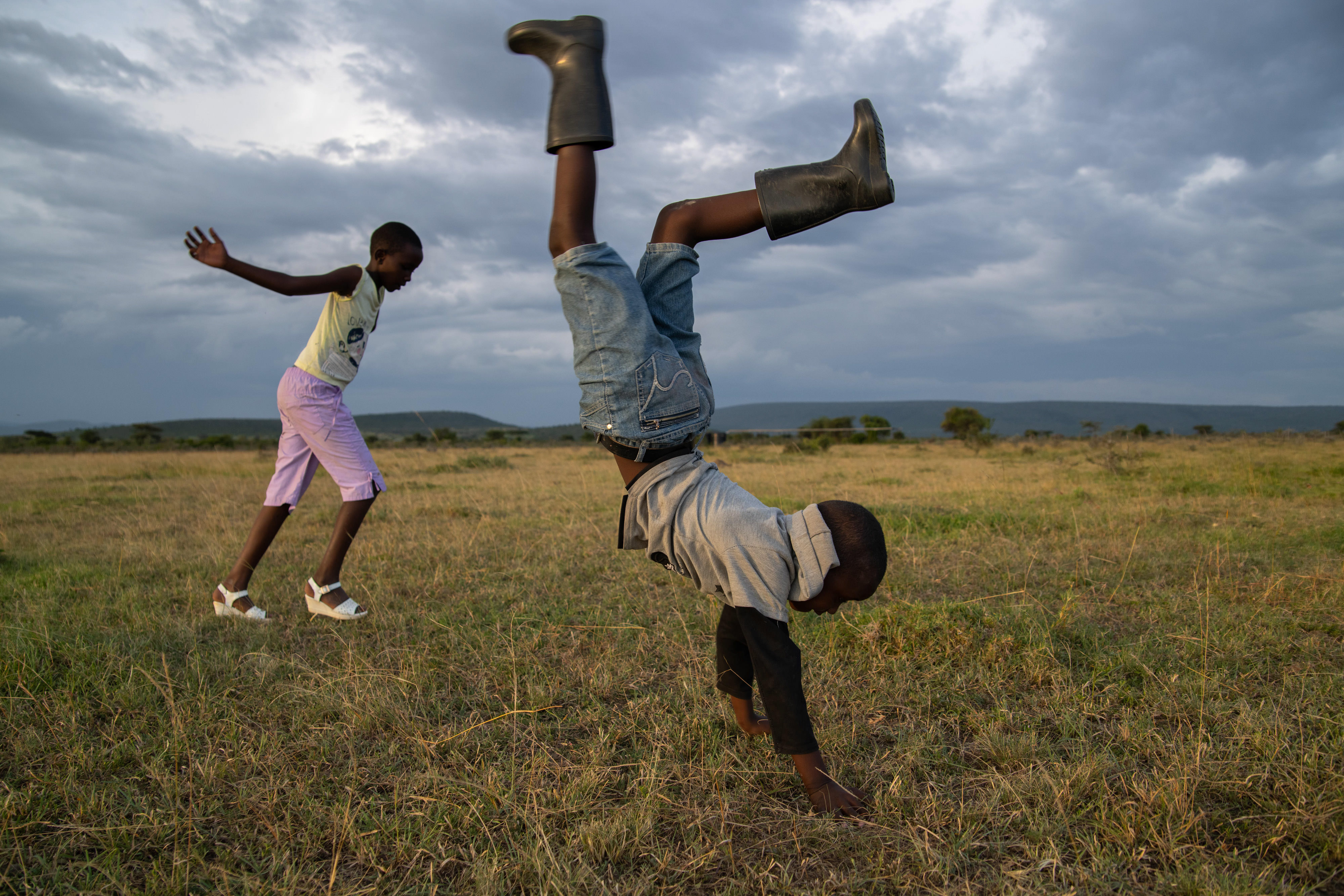Breaking Down Barriers to Conservation
Innovative lease agreements are opening up wildlife corridors and improving livelihoods in Kenya’s Maasai Mara
If you’ve ever seen images of wildebeest splashing across a river past dozens of hungry crocodiles, you’ve seen Kenya’s Maasai Mara National Reserve. This 580-square-mile reserve in southwest Kenya, which adjoins the Serengeti National Park across the border in Tanzania, is home to the great wildebeest migration and dozens of other iconic African species.
But animals moving north don’t stop at the edge of the Maasai Mara National Reserve. The reserve, managed by the government, relies heavily on the health of community lands surrounding it, which act as wildlife corridors and dispersal areas. Animals here must share the land with people — the Maasai — who have also lived here for thousands of years.
As more people and animals compete for space, longer droughts make healthy grass scarcer, and private fences now block time-worn migration paths, The Nature Conservancy and its partners are working to find solutions that will allow both people and wildlife to thrive.

Johnson Soit is the head teacher at Rekero Primary School. He lives with his wife and three children in Pardamat Conservation Area, just northeast of the Maasai Mara National Reserve and he is the chair of the Pardamat Conservation Area Board, which represents 850 landowners. Johnson has seen this landscape change over the course of his life. “When I was young, actually the whole place was open so animals were everywhere,” he said. “There was so many. You could hardly walk a kilometer without seeing an elephant or even a lion. So right now it’s totally different because now we have the fences.”

Beginning in the early 2000s, land began to be privatized and subdivided to individuals. In order to mark their property and to protect their healthy grass from others’ cattle and from grazing wildlife, landowners started putting up fences. This made life very difficult for animals moving through the ecosystem in search of food, water, and breeding grounds. But now, things are starting to change.
In 2013, the Maasai Mara Wildlife Conservancies Association (MMWCA) was created to serve as a membership organization for current and future wildlife conservancies here. TNC provided key start-up support, including helping to develop a conservation action plan and securing a $5.2 million grant from the U.S. Agency for International Development (USAID). MMWCA now has 15 community conservancies covering 347,000 acres that are partnerships between landowners and tourism operators. Landowners are able to earn an income by leasing their land into the conservancy and creating large, unfenced areas for wildlife movement, tourism, and livestock management. Recently, TNC helped landowners negotiate longer, 25-year lease agreements that pay more than 50 percent more for protected land than previous leases did.

In Pardamat, one of the newest conservancies, landowners have already leased 14,000 acres, with a goal of reaching about half the conservancy’s 64,000 acres. Already, Johnson is starting to see changes in the landscape. “We are slowly de-fencing. And now, we are starting to see some wild animals that were seen a long time ago and then for a long time, due to fences, they were not appearing anymore. One example is wild dogs, and we have the migration of giraffes — they are all over."

And the landowners are benefitting, too. Many parents, including Johnson, are using their lease payments to pay school fees for their children, and money from tourism is helping to improve their classroom infrastructure.
“Conservation has brought many changes to the classroom,” Johnson said. “We were also able to get desks so kids can sit comfortably, and it has made the school a conducive environment for learning. Because of the friendly environment – good classrooms, good desks – more kids are coming to school.”

The future is looking bright for these communities and the wildlife that live here. TNC is providing ongoing support to MMWCA, including working to strengthen their institutional capacity, which is already enabling them to attract other funding for their conservation objectives.
“We are doing conservation not only to benefit ourselves, but for future generations,” Johnson said. “I don’t want my kids going to a zoo to see the animals that once belonged to us. It’s a collective responsibility that we protect our wildlife on our ancestral lands.”
